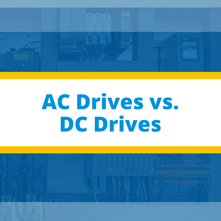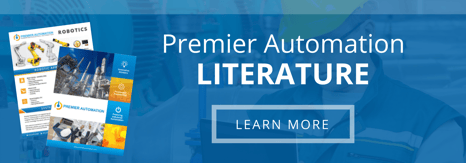 The need for Electric Drives is universal, and is increasing at a resounded rate due to constant innovation in the field of industrial automation—specifically robotics. Electric Drives offer the most efficient solution to controlling the output of a motor, and therefore are widely used in almost all industries, big or small.
The need for Electric Drives is universal, and is increasing at a resounded rate due to constant innovation in the field of industrial automation—specifically robotics. Electric Drives offer the most efficient solution to controlling the output of a motor, and therefore are widely used in almost all industries, big or small.
Variable Frequency Drives (VFDs) are required for precise control of speed, position and torque at different loads, which is not efficiently achievable through other methods such as introducing resistance. Some of the benefits of Electric Drives, AC or DC are:
- A high level of efficiency in an industrial environment
- Have a predictable behavior
- Allow the control of starting current
- Have faced great advancement in recent years and are now embedded with microprocessors and digital electronics components
Both AC and DC Motors have established their region of dominance in the industry, and are equally important, even though AC has established itself as the preferred mode of operation for the electric power system. Therefore, AC and DC drives also face a stiff competition as their efficiency is directly linked to that of the motor, and as a result the control system in place.
Putting them head to head, their comparison can be broken down in terms of a few categories.
Technology
The design of DC drives has perfected over the years, and thus given it inherent strengths, something which is difficult for AC drives to top. It is relatively easy & economical to control the speed of DC motors as compared to AC. However, the low cost of DC Drives doesn’t offset the rugged & reliable design of AC motors, which require less maintenance and thus offset the economic gains of a DC Drive. In the long run, DC Drives are bound to be overrun by AC ones even though they make use of reliable electromechanical technology, it would be outdated with the introduction of electronic controllers in AC Drives.
Performance Capabilities
One of the most recent innovation to take place in the world of drives has been in the form of flux vector drives, which virtually eliminates any performance limitation that AC drives had over DC ones. The latest control techniques put the performance of AC motors at par with DC, and in areas such as high-speed operation allow AC to take the lead. Manufacturers have also introduced inverter-duty motors that provide speed range control equivalent to that of DC motors, thus closing the gap between the two drives.
Area of Operation
It is quite clear that AC systems have an economic edge over DC, but in specific applications the latter has no replacement. Industries such as steel, paper and plastic have specific applications that require precise control of starting and running torque. This can only be achieved through a position transducer in case of an AC motor while requiring negligible upgrades in case of DC.
Through its well-built armature voltage feedback, DC drives can achieve this goal without the added price. In addition, the feature is in-built and so more reliable & robust than the position transducer solution for AC Drives.
Size
DC drives are relatively small compared to an inverter drive, effectively only being a bridge between the supply and the load. In comparison, inverter drives are formed through a network of components such as rectifiers, storage capacitors and a PWM bridge. This adds to the need for greater space while also raising concerns regarding heat dissipation which can bring down the overall efficiency of the system.
Furthermore, DC drives allow brakes to be applied in both directions of rotations, and the subsequently generated energy returned to the mains. In comparison, AC drives with similar features require extra units such as intermediate storage or an additional power bridge, once again taking precious space in a strictly managed industrial environment.
Purchase Price
A drive wouldn’t be of any use if the cost of associated equipment makes it unfeasible and slows down Return on Investments. DC drives fail in this department as even though the initial cost of drives is same for both, DC drives are costlier and this bring down their overall competitiveness. Greater maintenance costs in case of DC motors widens this gap even further.
As a result, it may be concluded that both drives have their own pros and cons, making their coexistence a vital part of the industrial environment, for the fulfillment of all speed-control requirements at maximum efficiency.
Why Premier Automation?
Our team of 30 engineers works relentlessly to create a fully integrated automation environment for our customers to ensure better reliability, higher quality, and total production visibility. If you’re seeking a partner for your next automation or controls project, contact one of our experienced engineers to schedule a free on-site visit:




